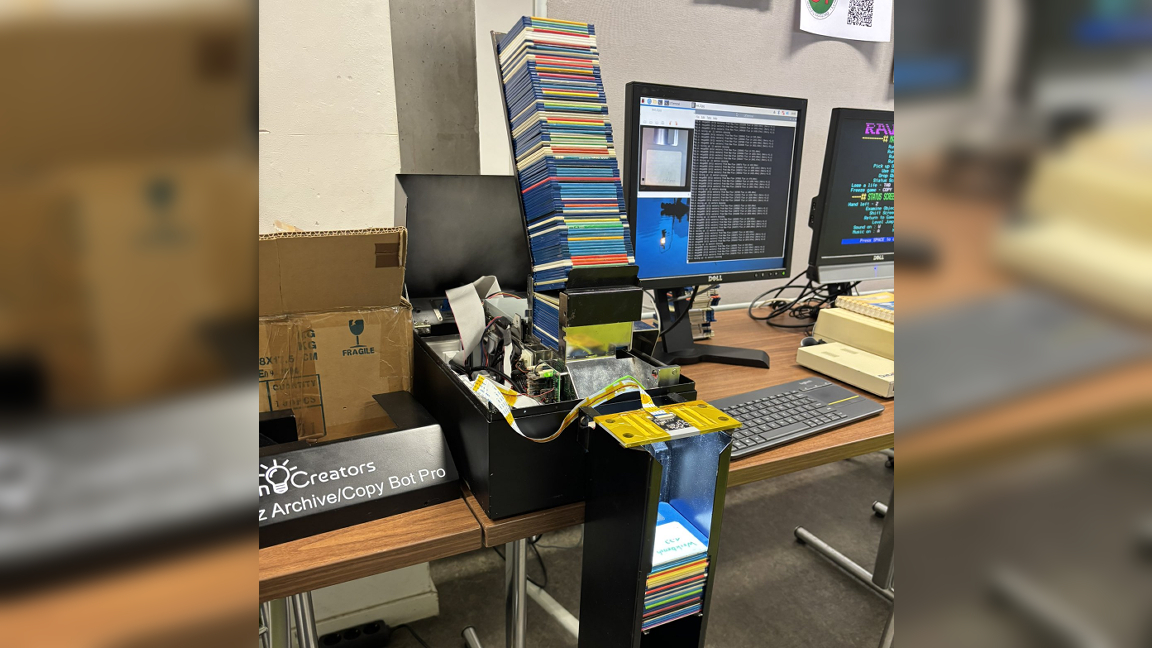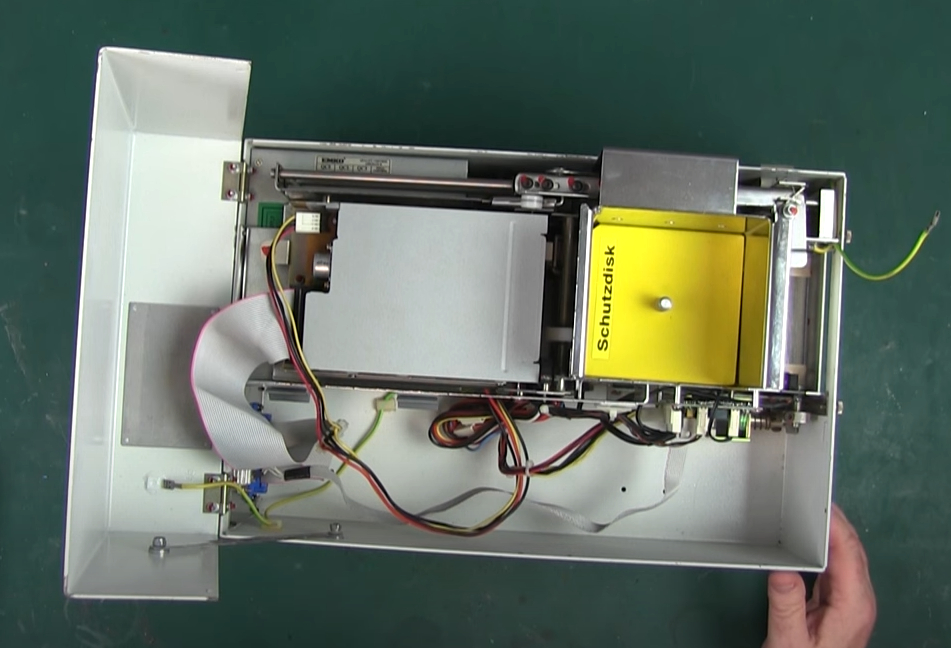
Sometimes it takes a modern eye to innovate problems of the past. Today we've got an incredible creation to share that does just that by maker and developer Graham Tinkers. Graham has created a custom archival system using parts from disk duplicators and our favorite SBC, the Raspberry Pi, to automatically process stacks of floppy disks and back them up onto a USB drive.
Graham has been sitting on a stack of over 800 Commodore Amiga floppy disks with intentions of manually backing them up. Looking through the stack of disks, we can see a few "backups" in the mix. The Amiga scene was notorious for cracked software which was pirated and shared via disk copy parties and BBS.
For those a little too young to remember the Commodore Amiga range. The Amiga 1000 was introduced in 1985 and disrupted the market as it was. Custom hardware and a pre-emptive multitasking OS meant that the Amiga was ahead of its time, but also pricey. The range saw a plethora of low and high cost machines. Typically with machines like the 500, 500+, 600 and 1200 taking a larger percentage of the range due to their lower cost and consumer focused design. The more expensive Amigas, for example the 2000 and 4000, often found their way into the TV industry of the 1980s and 90s.
The idea began when Graham came to own a couple of old disk duplicators. He ended up integrating them into this project which uses a motor-driven mechanism to pop floppy disks into the duplicators automatically from a stack. Disks are ejected using the spring loading of the floppy drive. The rig can hold about 50 disks at a time and puts them into a complete pile when they're finished. Graham encountered only a few issues, for example a label peeled off and stuck to a disk turning spindle so it's necessary to keep an eye on it while it processes. He also programmed error codes for situations like when disks get jammed.

The main board powering the project is a Raspberry Pi 3B. As disks are archived, the disk image files are stored onto a USB drive. The Raspberry Pi is also connected to a camera module which is used to capture images of the floppy disk as it's copied.
The software driving the operation is Greaseweazle, an open source tool used to help read floppy disk data. Graham confirmed in the project thread that it's possible to capture a flux image that has copy protection but it doesn't always work. After the floppy disk is imaged as a disk file (we hazard a guess that this would be a typical ADF file), the images captured by the camera are saved with the same file name as the floppy disk image but with a .jpg extension.
According to Graham, the plan is to donate the machine to a local maker space in Berlin so others can use the system to archive their floppy disk collections, as well. If you want to see this Raspberry Pi project in action, you can check it out over at the original project thread shared to X (formerly Twitter).







